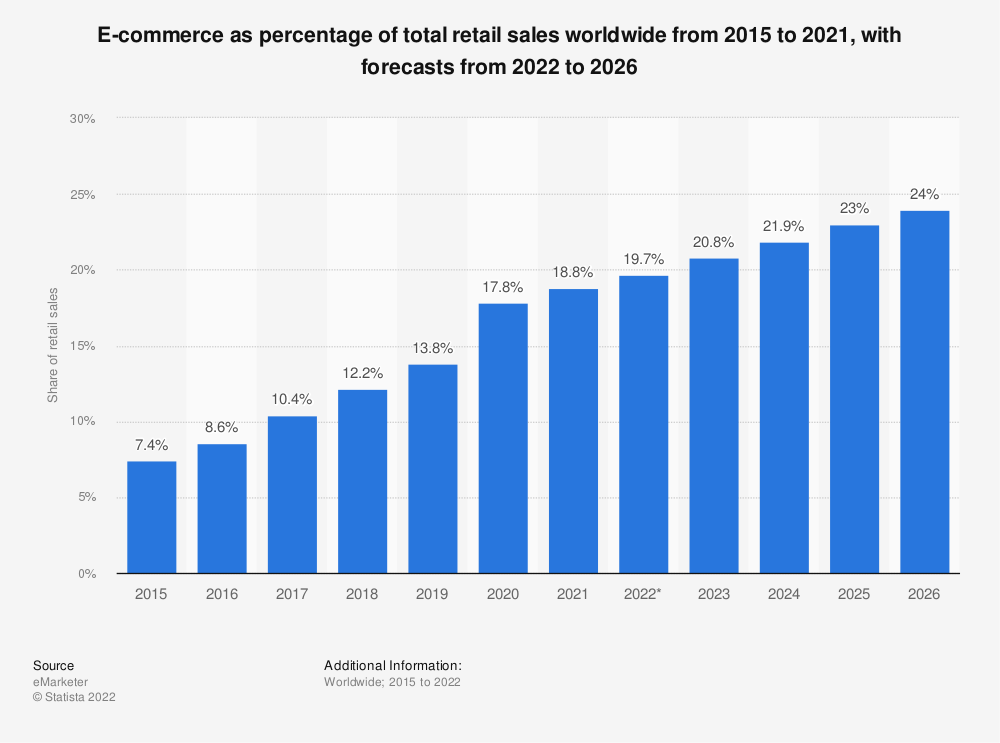Holiday Season fraud threat monitor
Over the past two years, online shopping has seen a boom. However, the sharp rise in transaction volume brings along with it an increasing potential for online fraud. Are businesses prepared for the 2022 holiday season?
In the past 36 months, the adoption of internet retail has greatly accelerated and ecommerce has become relevant to more people. The variety of items that can be procured has expanded, as well as the willingness of consumers to purchase just about anything online, including daily necessities.
With Black Friday and Cyber Monday around the corner, and Christmas fast approaching, online retailers are bracing for impact. The higher volume of online shopping is widely expected to also see a corresponding rise in fraud cases.
The great acceleration
All across the European continent, shoppers are increasingly turning to the internet for their holiday shopping. A European consumer report for Black Friday shopping revealed that 45% of European consumers preferred shopping online in 2021.
Recently, the head of Europol’s European Cybercrime Centre (EC3) referred to the holidays as “peak season for cybercriminals and fraudsters.” Europol is warning consumers to be careful. But, are businesses doing their part?
In the European Union, 46% of firms report that they took action to become more digital — for example, by providing services online — according to the results of the EIB Investment Survey (EIBIS) conducted from April to July 2021. Most believe that the digital transformation was sped up by the Covid-19 pandemic.
A recent report released by the OECD further lends credence to the trend of increased ecommerce adoption. While ecommerce adoption has accelerated in the past three years, the scope of ecommerce has also seen significant growth. The realm of ecommerce now encompasses various new product categories as well as new consumer segments, such as the elderly. Furthermore, for many Europeans, ecommerce has become a means of procuring everyday necessities alongside the typical services and luxury goods.
Consumers are buying more online
In 2021, the European economy has been on the rebound. However, despite the return to growth, consumer spending habits have permanently changed.
Research by Strateg& and PwC shows that across the globe, just about every consumer who shopped more online in the past two years, is also planning to keep doing so moving forward, whether via computer (90%) or mobile phone (93%). Data from PwC’s Global Consumer Insights Pulse Survey released in June 2021 underscores that shopping via smartphones is the fastest growing channel for sales.
In addition, European ecommerce grew by 13% to €718 billion euros in 2021 alone, according to reports. Businesses, therefore, need to become more digital in order to keep up with their customers. However, becoming more digital does come with its risks, if not done wisely, e.g. with the help and guidance of knowledgeable partners.
With online spending comes online fraud
From phishing emails, click & collect fraud, automated bot attacks and account takeovers (ATO) to CNP fraud, the digital commerce boom has emboldened fraudsters. In fact, the increased fraud activity caused by the recent surge in e-commerce activity is expected to also become part of the new normal. From the fraudster’s point of view, it’s open season.
Many consumers are either making online payments for the first time or doing so at a much higher frequency than before. Since every online transaction is an opportunity for fraudsters, the increase in online transactions means that there are more attempts being made to lie, cheat and steal. Unfortunately, many businesses still don’t have sufficient protections in place.
What to look out for this 2022 holiday season
This holiday season, we suggest you pay close attention to the following types of fraud in particular; account takeover, synthetic identities and payment fraud. Payment fraud is an umbrella term used to refer to various types of online fraud in which payment details are involved. The most common are friendly fraud and clean fraud.
Account takeover fraud (ATO)
This is when fraudsters use someone’s existing log-in credentials (username/password) to purchase goods, rent services, or get access to accounts to gain more information on the customer, or change these credentials in any way.
Synthetic identities
Whereas fraud using false credentials is commonplace, synthetic identities are the next step in the evolution of the method. When creating a synthetic identity, a fraudster designs an identity by often using a combination of both real and fake personally identifiable information. The result is an implied identity whose authenticity is extremely difficult to verify. Without proper KYC, customer scoring or other checks in place, it is hard to trace or verify this person.
Friendly fraud
Friendly fraud is when a user makes a purchase, but then demands a refund by rejecting the payment. This can be for any host of reasons, both legitimate and illegitimate. The user may claim that the product was never delivered, or that it arrived damaged, and therefore request the funds be returned. Because a chargeback isn’t always with fraudulent intent, this type of fraud is often referred to as ‘friendly fraud’.
Indeed, businesses have also been experiencing a surge in chargebacks and disputes. These so called ‘friendly fraud’ incidents are on the rise for multiple reasons, ranging from pandemic-related travel cancellations to customers not recognizing (or remembering) transactions they made. In some cases, customers might have simply changed their minds too late. This is often the case when customers subscribe to online services that start with ‘free trials’ before charging, but forget to cancel.
Chargebacks are very costly, not just because of the missed revenue of the sale, but also due to penalties, the loss of goods, fees and the time spent on processing the ‘error’.
Clean fraud
Clean fraud, on the other hand, is when a fraudster is able to successfully make a purchase, with stolen – though unreported – credit card details. Since banks aren’t yet aware that the credit card in question has been compromised, the payment is allowed without any red flags being raised. By the time the card has been blacklisted, the fraudster, has already had ample time and opportunity to completely max out the credit card.
Clean fraud incidences have become more widespread thanks to fraudsters’ increasing use of automated card testing. Stealing credit card information is one thing. Testing them to find out which one credit card is still active, is another. This testing process used to be tedious manual labour. Nowadays, however, fraudsters make use of networked computers (botnets) that are capable of attempting thousands of small transactions in a short period of time. How many forms of online fraud are there, and what are the risks/solutions?
Read about it here: The online fraud handbook
Protect your business by protecting your customers
From missed revenue to disappointed customers and reputational damage. Fraud hurts businesses in more ways than one. This holiday season, remember that protecting your business means protecting your customers. Though it might sound straightforward, it’s actually more akin to walking a tightrope. Why? That’s because the measures you take to prevent fraud, may also hurt your business in other ways.
For example, if you’re fully up-to-date with European SCA regulations and have implemented 3DS2 in your payment flow, you should be aware that relying on 3DS2 for every single transaction is actually going to negatively impact the checkout process.
A one-tool-fits-all approach – like, for example, 3DS2 – might be the easy way out, but there are far better ways to prevent fraud.
Read about it here: How to combat payment fraud without losing revenue.
Fraud vs Friction’ is a false dilemma
You only get one chance to offer a positive customer experience. Failure to offer a frictionless experience may result in unnecessary cart abandonment and lower conversion rates. Your goal is to facilitate transactions by removing any and all friction whenever possible, while at the same time, securing transactions with the highest level of security. The question is, how do you introduce measures to prevent fraud, without adding friction?
At Alphacomm, we’ve developed a smart payment processing solution as well as a frictionless fraud solution that eliminates chargebacks and offers a 100% guarantee to prove it. By being smart about fraud risk and fully understanding every single detail of SCA regulations, we’re able to selectively apply different fraud checks to different transactions and only when required. The result is a customer experience that is smooth, inspires loyalty and significantly increases customer lifetime value.
Need help?
If you’re looking to review, tighten up or implement payment security measures, consider choosing an experienced partner, trusted worldwide by industry leaders. Interested? Let’s talk! Get in touch with us today.
Let's make it happen!
Say Hello!
Address
Scheepmakerspassage 183
3011 VH Rotterdam
The Netherlands
Business
Follow us

Address
Scheepmakerspassage 183
3011 VH Rotterdam
The Netherlands
Business
Follow us

© Copyright Alphacomm B.V. | Made with <3 in Rotterdam


